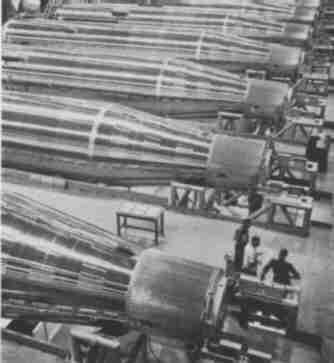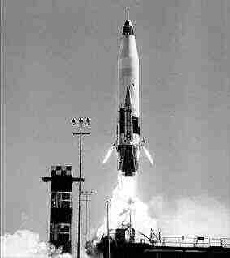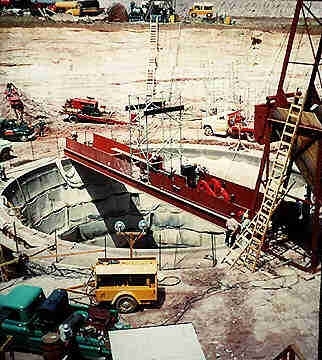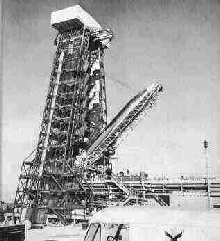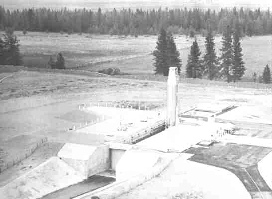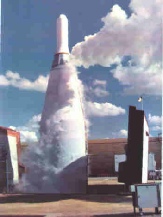|
|
The Atlas Intercontinental Ballistic Missile (ICBM)
Originally designated the SM-65, WS-107A-1, a 240,000 pound vehicle with two 135,000 pound booster engines and a 60,000 pound sustainer engine. - Atlas A flown with only the booster engines.
85 foot long, thin stainless steel missile delivered at 260,000 pounds, with thrust of 360,000 pounds, range of 6,325 nautical miles. Propellants included Rocket Propellant-1 (RP-1), a kerosene based fuel, and liquid oxygen (LOX) a cryogenic liquid maintained at minus 297 degrees F.
Deployed in three ICBM configurations, Atlas D, E and F. Continued as a space booster throught the Atlas V.
Photos - Above, left, Atlas production at Convair. Top right, Atlas A launch,
Below left, early Atlas E with heat shield reentry vehicle. Below, right, breaking ground at Warren
|
|
First Flights
11 June 1957, first test flight missile A4 from Complex 14 at Cape Canaveral. Ten seconds after launch, one of the booster engines failed and the missile was destroyed.
17 December 1957, Atlas 12A lifted off and its two engines burned for the full programmed two minutes - the missile flew 600 miles down the Eastern Test Range and was declared a complete success.
Basing
Western Development Division and its follow-on, the Ballistic Missile Division, the AF and SAC changed basing modes, configurations and other factors in the late 1950s.
Basing and configurations finalized by 1959, with development and construction on a fast track and the nation's highest priority.
576 SMS at Vandenberg AFB activated on 1 April 1958, with the first Atlas D placed on alert 31 October 1959 in site 576-A, with three above ground gantries and associated control rooms, guidance buildings and other structures. This version was later designated the PGM-16D, for a pad mounted, ground based missile.
Basing is described for each version in the pages linked below.
Construction
The construction of missile sites in locations around the country was an enormous task. Atlas alone was deployed in eleven different states. Construction of twelve operational squadrons, training, testing and maintenance facilities and all other support facilities was completed as testing of the new system was conducted, under the "concurrency" concept, with the operational units all combat ready by the end of 1962. At the same time, the US was building Titan I, Titan II and Minuteman missile sites
Photos Below - Missile site construction and one of the Vandenberg gantries with an Atlas being installed
|
|
|

